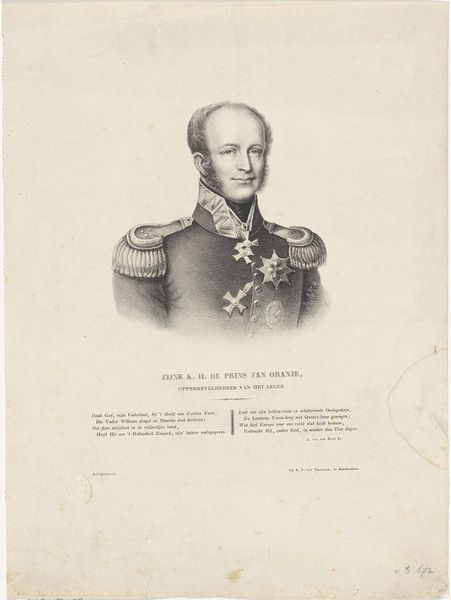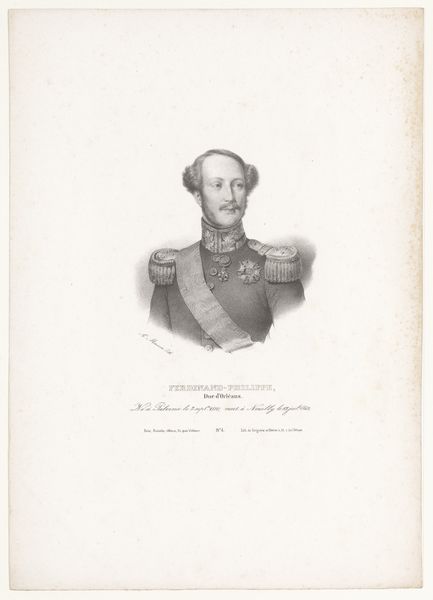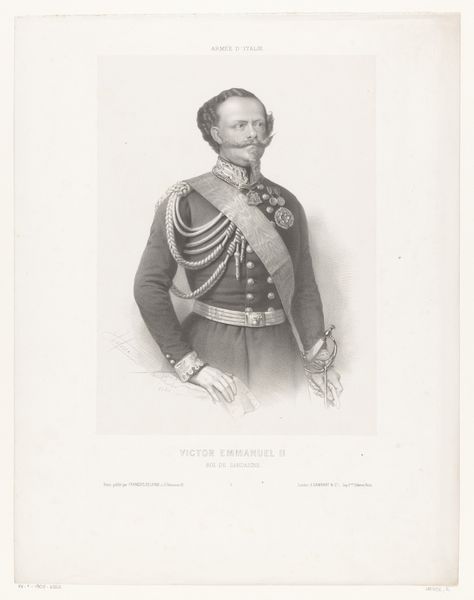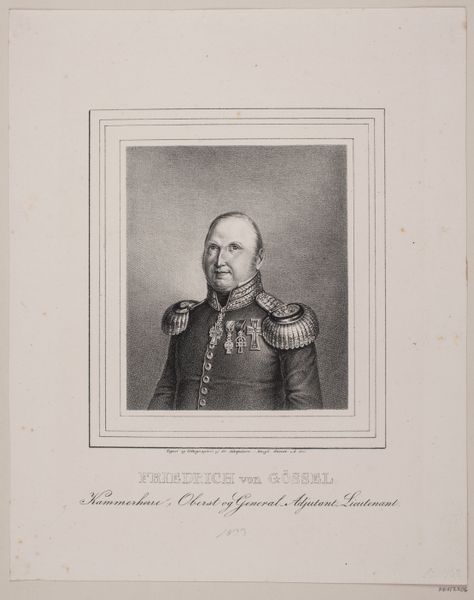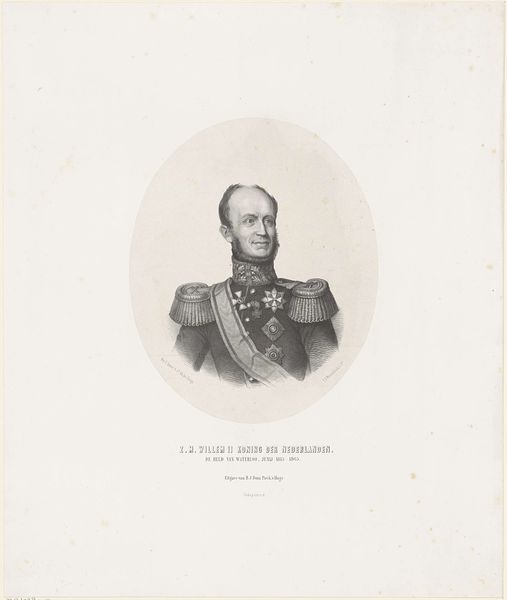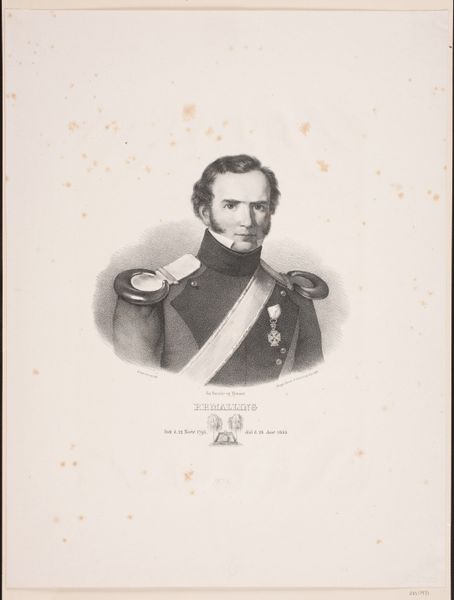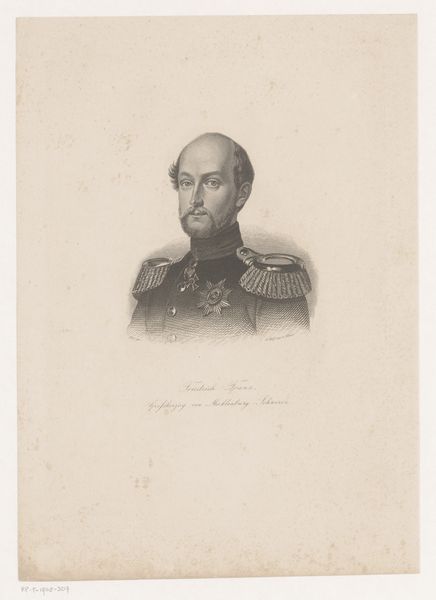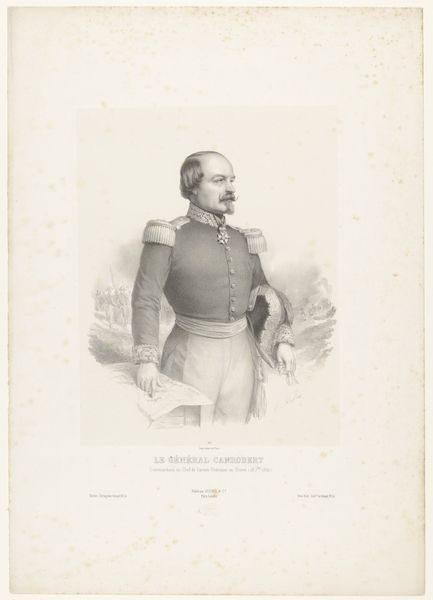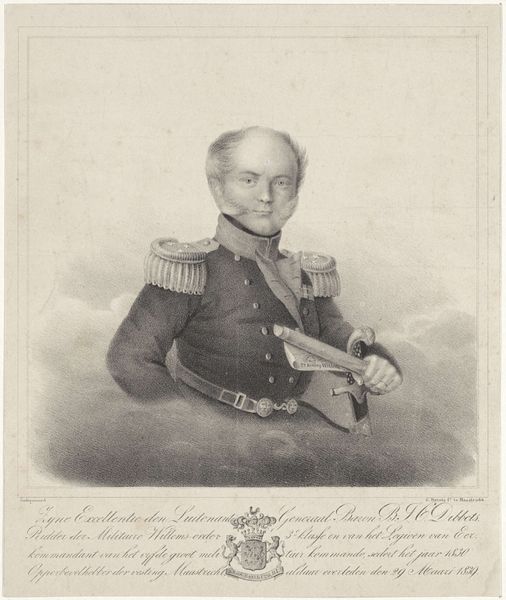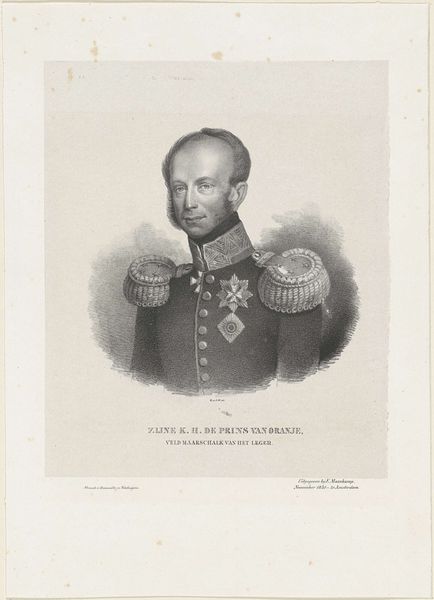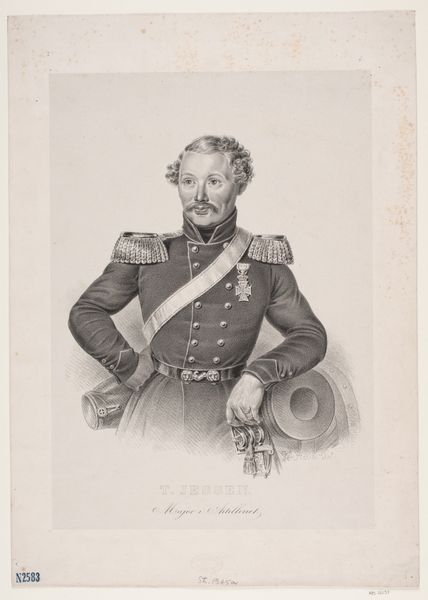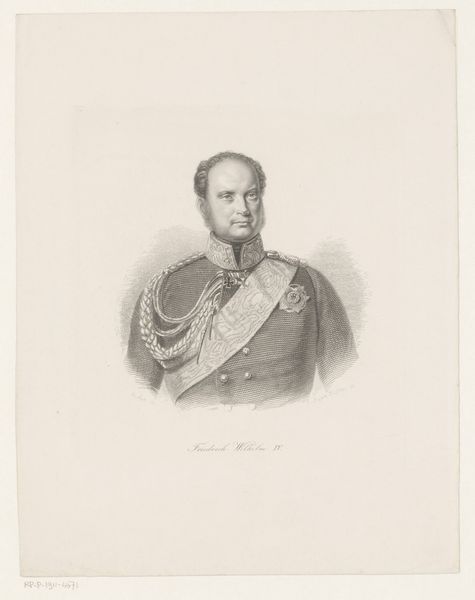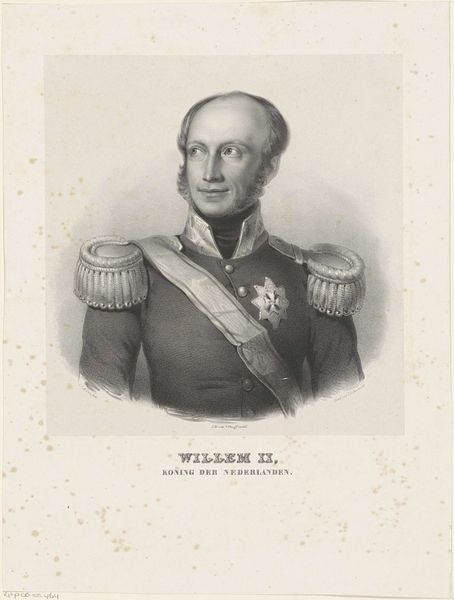
Portret van commandant Bernardus Johannes Cornelis Dibbets 1808 - 1848
0:00
0:00
pieterivbarbiers
Rijksmuseum
print, graphite, engraving
#
portrait
# print
#
old engraving style
#
pencil drawing
#
graphite
#
history-painting
#
academic-art
#
graphite
#
engraving
Dimensions: height 460 mm, width 317 mm
Copyright: Rijks Museum: Open Domain
Editor: This is a portrait of Commander Bernardus Johannes Cornelis Dibbets, made sometime between 1808 and 1848 by Pieter Barbiers the fourth. It’s a print made from graphite and engraving. I find the detail of the uniform and the laurel wreath incredibly striking. What stands out to you? Curator: This piece provides a window into the evolving public perception of military figures during a tumultuous period in Dutch history. The rigid formality, typical of academic art, underscores the institutional importance of the military in shaping national identity. Notice the placement of Dibbets within the composition; he’s presented as an individual but is consciously framed with emblems of military authority, medals and decorations. It prompts the question: is this simply a depiction of a man, or a calculated image intended to inspire loyalty and project power? Editor: That’s interesting. I was focusing on the artistic skill, but you are pointing out how this image functioned within society. Did the burgeoning museum culture of the time affect portraiture like this? Curator: Absolutely. As museums and public art galleries became more established, they shaped what kind of art was considered valuable. Images like this served to canonize figures like Dibbets. The engraving medium also ensured a wider dissemination of the image than painting would have. Editor: So, it’s like an early form of propaganda, in a way? A carefully crafted message meant for public consumption. Curator: The politics of imagery are complex, especially within institutions like the military. It's designed for reverence, isn't it? But by displaying it publicly it opens the image up for scrutiny. Consider how his legacy has been debated over time; does this portrait solidify a favorable public perception or something more ambiguous? Editor: I never considered how displaying something so official makes it open for interpretation and challenges to the established viewpoint. Curator: Precisely! Art becomes part of the public sphere. Thinking about that broader history of reception definitely shapes how we understand its significance.
Comments
No comments
Be the first to comment and join the conversation on the ultimate creative platform.
